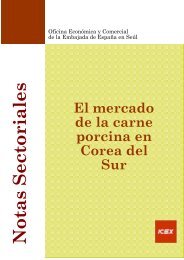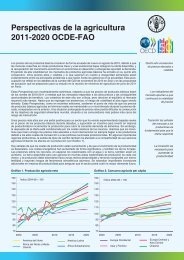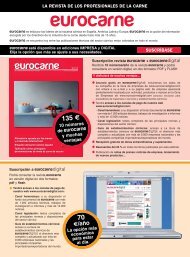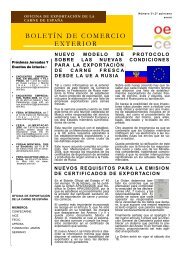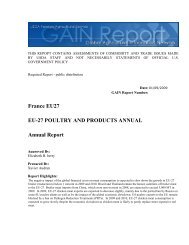Dietary Guidelines for Americans - SchoolNutritionAndFitness.com
Dietary Guidelines for Americans - SchoolNutritionAndFitness.com
Dietary Guidelines for Americans - SchoolNutritionAndFitness.com
- No tags were found...
You also want an ePaper? Increase the reach of your titles
YUMPU automatically turns print PDFs into web optimized ePapers that Google loves.
aPPendix 2. KEY CONSUMER BEHAVIORS AND POTENTIAL STRATEGIES FORPROFESSIONALS TO USE IN IMPLEMENTING THE 2010 DIETARY GUIDELINESThe <strong>Dietary</strong> <strong>Guidelines</strong> <strong>for</strong> <strong>Americans</strong>, 2010 includesre<strong>com</strong>mendations based on the most recentevidence-based review of nutrition science. Twooverarching concepts emerge from these re<strong>com</strong>mendations:maintain calorie balance to achieveand sustain a healthy weight; and focus on nutrientdensefoods and beverages. Brief descriptions ofthese concepts are provided to the right.Health professionals, educators, policymakers, andother professionals will use the <strong>Dietary</strong> <strong>Guidelines</strong> <strong>for</strong><strong>Americans</strong>, 2010 to help the American public leadhealthy lives. This section, which includes a table ofkey consumer behaviors and potential strategies, or“how-tos,” is designed to assist these professionalsas they encourage healthy habits. For practicalpurposes, this table is organized by 12 specific topicareas (calorie intake, physical activity, vegetables,fruits, milk and milk products, protein foods, grains,oils and fats, added sugars, sodium, alcohol, andfood safety).the strategies presented in the table are notevidence-based re<strong>com</strong>mendations. they are presentedas helpful hints that could be tailored<strong>for</strong> different individuals or groups.When working with consumers, professionalsshould draw from research and use theory-basedapproaches when possible. Ultimately, successfulconsumer messages will vary based on the targetaudience and should be tested with the specifictarget audience be<strong>for</strong>e use. There<strong>for</strong>e, the potentialstrategies in the following table are intended tobe a conceptual starting point <strong>for</strong> further messagedevelopment and not a definitive or <strong>com</strong>prehensiveresource.overarching concePtsMaintain calorie balance to achieve andsustain a healthy weightControl total calorie intake to manage bodyweight. For most people, this will meanconsuming fewer calories by making in<strong>for</strong>medfood and beverage choices. Increase physicalactivity and reduce time spent in sedentarybehaviors.focus on nutrient-dense foods and beveragesIncrease intake of foods that are consumedbelow re<strong>com</strong>mended amounts. For mostpeople, this means choosing more vegetables,fruits, whole grains, fat-free or low-fat milkand milk products, seafood, and oils.Reduce intake of foods and food <strong>com</strong>ponentsconsumed in excessive amounts. For mostpeople, this means consuming fewer foodsand beverages high in solid fats (sources ofsaturated and trans fatty acids), added sugars,and sodium (i.e., consume these foods andbeverages less often and in small amounts).If alcohol is consumed at all, it should beconsumed in moderation and only by adults oflegal drinking age.DIETARY GUIDELINES FOR AMERICANS, 2010 62



